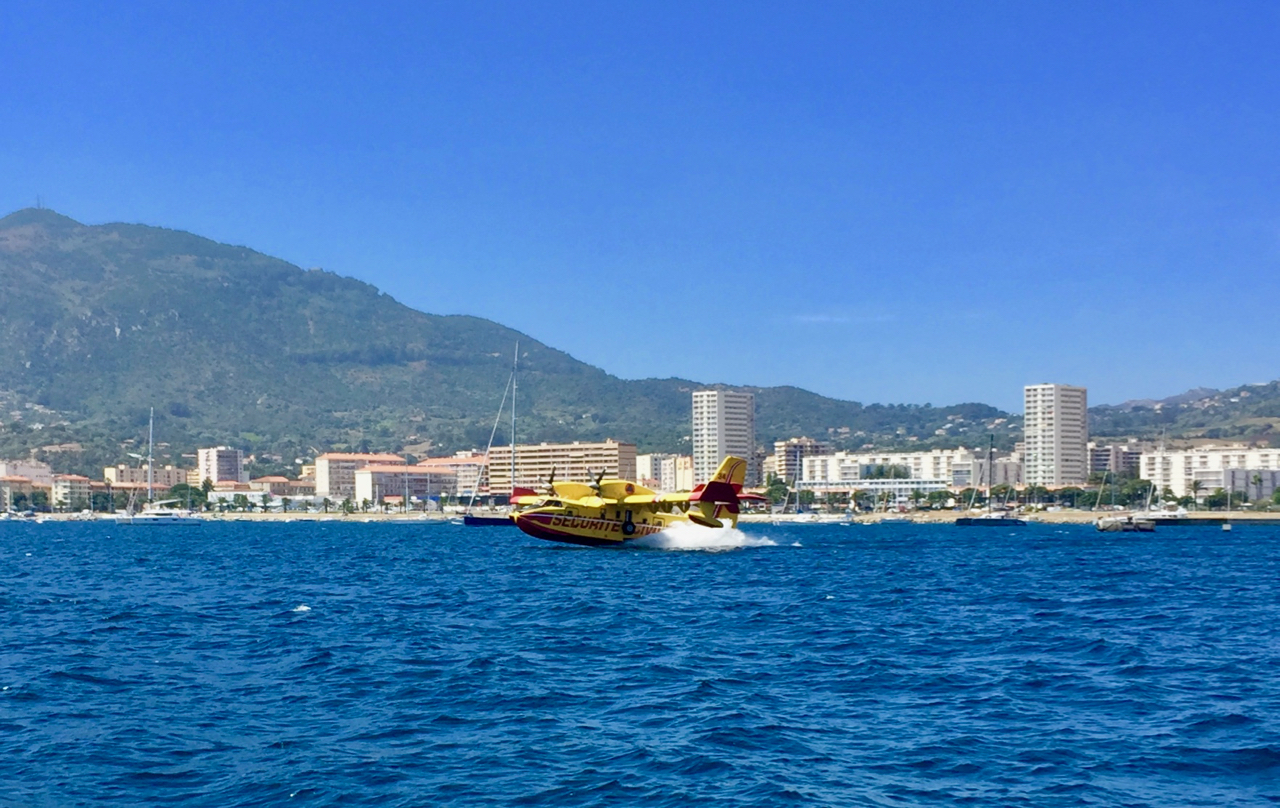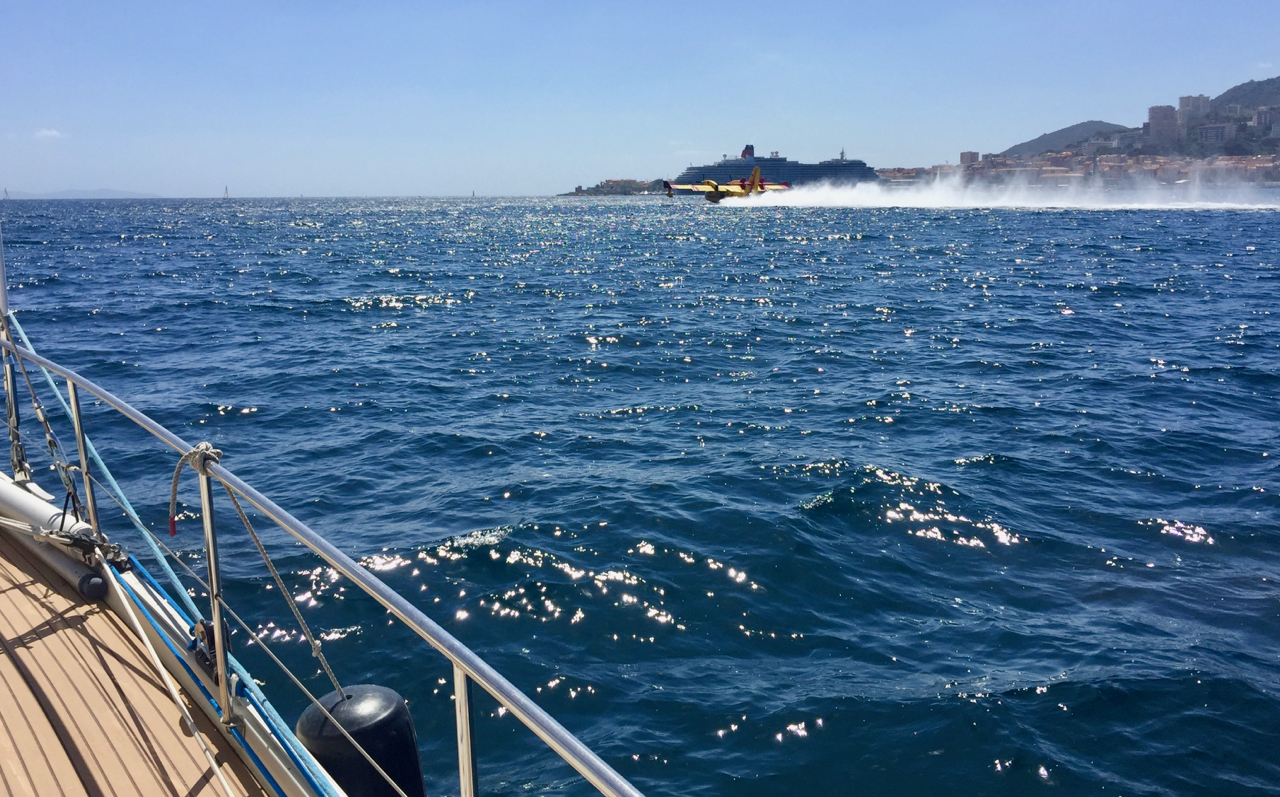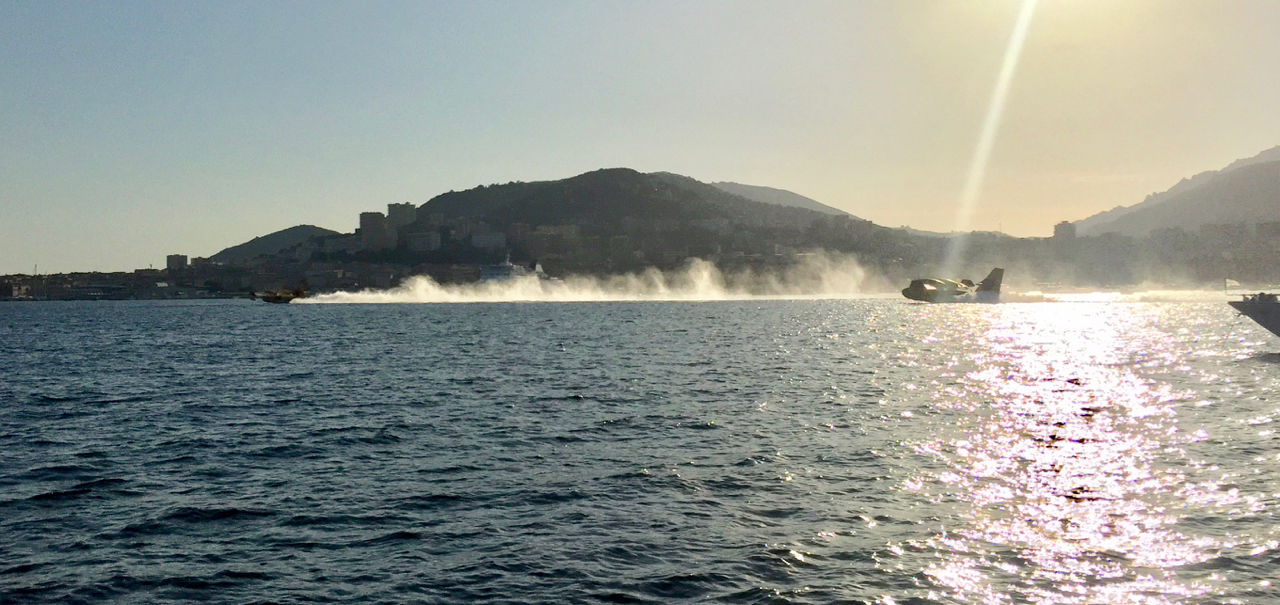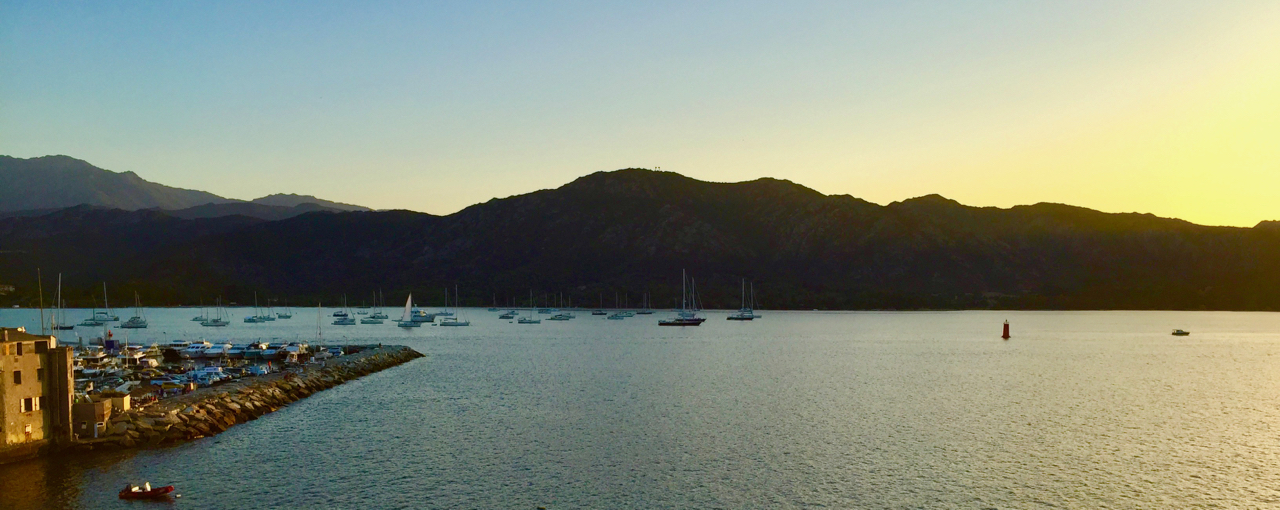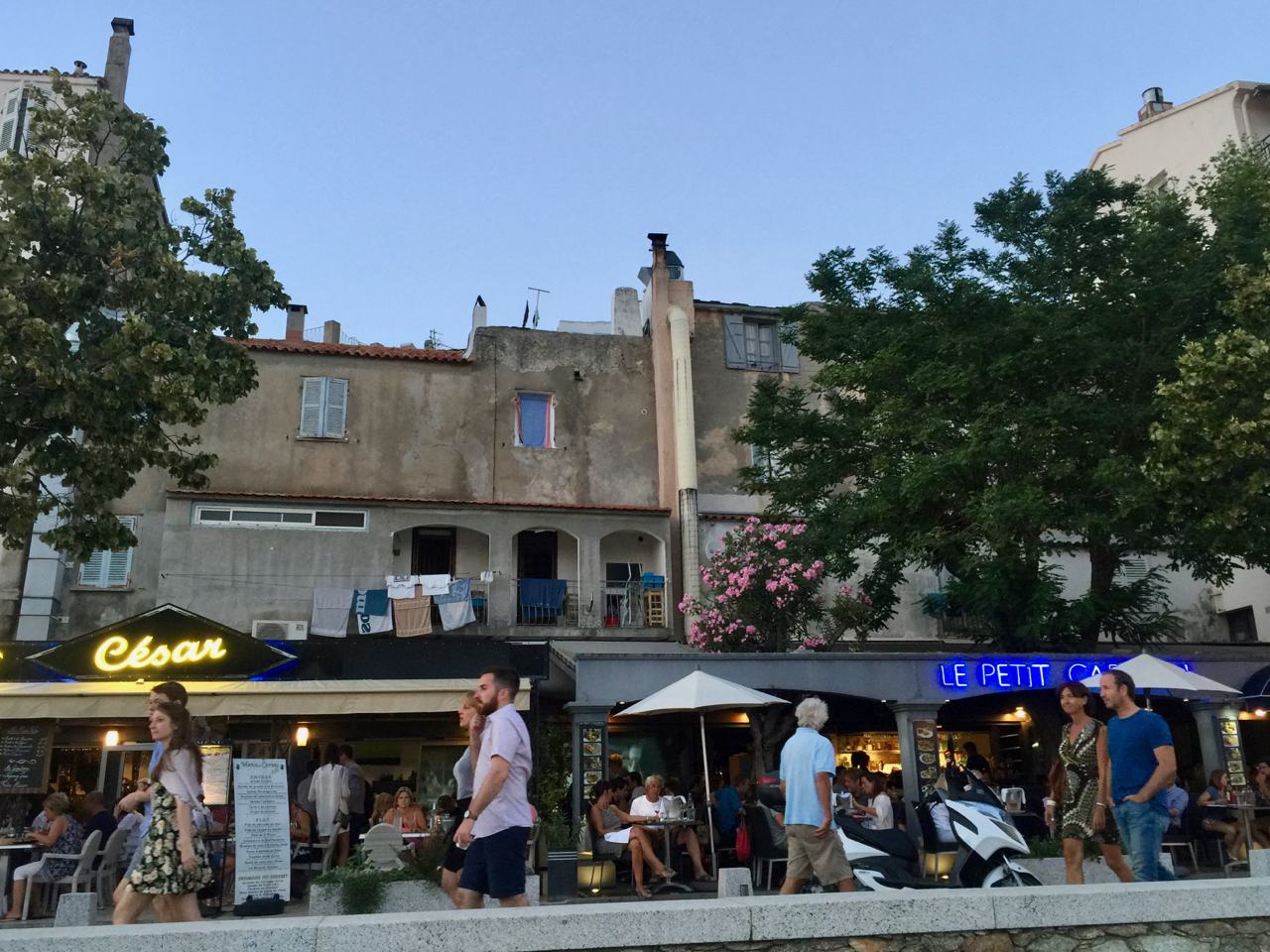August in Porto Cervo. Rush hour happens twice a day: half-past noon, and six o'clock in the afternoon. At six o'clock, there is a mad rush to return to the docks, and get ready for cocktails, dinner, and parties.
Of course this means getting up in the morning is best left to the yacht crews and other hired help, who are seen running around from soon after sunrise, cleaning decks, polishing windows, and provisioning fresh delicacies at the mini-market by the Costa Smeralda Yacht Club clubhouse. Their employers only start to roll-out of their cabins by late morning, so it takes until after high noon for the mad yacht cavalcade out of port to start.
On this rather random photo, almost a dozen yachts are gunning their engines on their way out and Peregrinus' Zodiac tender pretty much had to get out of the way, or get run over.
Porto Cervo, 12:27 PM, 19 August 2016. iPhone 6 Plus.





